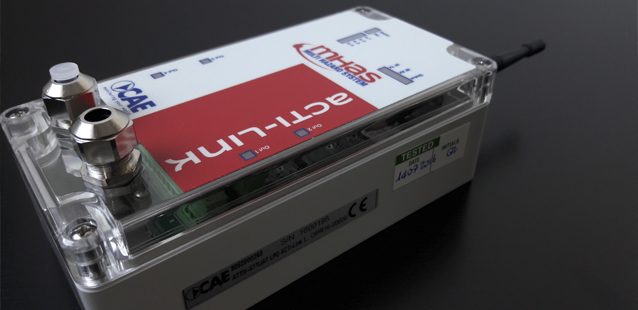ACTI-Link: a new technology for short and medium range telecommunications

The need to extend the area in which an automatic station can function with alarm sensors and devices led CAE to expand its family of telecommunication products by introducing the medium-range ACTI-Link, based on the standard SRD (Short Range Devices) technology, in addition to the short-range WSN technology (Wireless Sensor Network). These devices work in free frequency ranges that allow radio connections capable of covering more than 5 km in optimum conditions. ACTI-Link is available in two different versions: with specific remote control features or with specific starting-up and operating features.
The ACTI-Link Remote Control Unit allows wireless connection between the serial port of a sensor and the station. This allows the station to receive data from remote installed sensors, as if they were connected to it through a cable, while at the same time avoiding the typical inconveniences of physical connections: greater vulnerability to damage, the need to have extensive and costly cable installations, distance limitations, impossible installation in case of topographic limits.
Another version of ACTI-Link has also been developed which has the capacity to simultaneously function as: an activator, a component actuator, a repeater of signals from and to other modules and a PC interface. This device, which combines different diagnostic functions, is used to manage all components of the monitoring and alert systems for the spreading of acoustic and visual alarms, as well as for vehicular traffic prohibition (specifically: sirens, traffic lights, warning lights, etc.) By sending a radio signal, the device activates all "target" modules that form the 'early warning' system and then the signal spreads through point-to-point or point-to-multipoint communications. ACTI-Link also performs the fundamental task to repeat the radio signal, in order to cover distances greater than the range covered by only two point-to-point communication devices.
The architecture of a field sensor network remote-controlled through ACTI-Link nodes can always be divided into sub-networks which can be activated independently or simultaneously. It is therefore possible to divide complex networks into secondary branches, by applying both WSN and ACTI-Link communication technologies in sequence to meet the critical issues connected to spatiality and to the most suitable monitoring and alerting typologies according to the situation at hand.
Moreover, the introduction of these devices is a new step for CAE towards environmental protection. ACTI-Link actually stands out for being the first CAE product with a ROHS certification. This directive establishes a restricted use of Lead, Mercury, Polybrominated Biphenyls, Polybrominated Diphenyl Ether, Hexavalent Chromium and Cadmium in the production of some specific products, for example IT and telecommunications equipment, electrical and electronic tools, monitoring and control instruments.
For further technical details about the functionality of these two products, please download the relevant sheets below.
